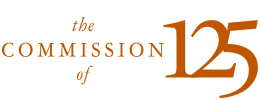Producing a Comprehensive Master Plan
Recommendation 5:
Develop a University Master Plan to integrate academic planning and strategic goals with our facilities, infrastructure, and financial resources. The plan should be selective, and results should be measured systematically and objectively.
The University Master Plan for facilities, infrastructure, and financial resources must serve academic initiatives and aspirations, thereby providing a road map to support a disciplined culture of excellence.
The plan must be selective—it cannot apply resources equally to all academic programs. The plan should advance long-term academic goals and identify new initiatives and areas to receive special emphasis. Both UT’s teaching mission and the student experience are best served by a single, well-planned campus.
The University Master Plan should:
- Prioritize resources to support academic and educational needs and goals.
- Encourage consolidation of duplicate academic or administrative functions.
- Provide a process for evaluating academic programs, and, if necessary, curtailing or eliminating those that are outdated or performing poorly.
- Facilitate cooperation and planning among the colleges, the central university administration, facilities planning groups, and the Office of Resource Development.
- Coordinate facilities planning to assist in recruiting and retaining talented faculty, resulting in improved teaching and research.
- Facilitate specially designed classrooms, offices, laboratories, and other structures when necessary.
- Adhere to the spirit of the Campus Master Plan created in collaboration with Cesar Pelli and Associates.
- Guide fundraising and the development of existing and new resources.
- Identify opportunities to collaborate with programs at other institutions, especially those within The University of Texas System.
The University Master Plan should be flexible, not a rigid and absolute formula for the deployment of resources over a long period of time. It should define the main forces impacting The University, the main challenges and opportunities, and the principles and priorities for development in the near and intermediate term. The plan should be a guide, not a recipe, for leaders who must respond and adapt to the changing landscape in academia and the world at large.
The University Master Plan must address technology, which is a key part of the infrastructure and will play a major role in all university enterprises. UT must embrace technology and commit resources to being on the leading edge of new developments, even at the risk of making mistakes.
Recommendation 6:
The University must consistently make the best use of its facilities, especially its classroom and laboratory space and off-campus properties, while maintaining a superior campus environment. New facilities should be designed and built more efficiently, with better coordination among academic, facilities planning, operations, and fundraising divisions.
The University has a backlog of critical maintenance and renovation projects, largely the result of the aging of the campus and inadequate resources. It has neglected open spaces that are vital campus assets.
There is a shortage of classroom and laboratory space as well as limited land for construction of new buildings on the main campus. Furthermore, The University should use its facilities more efficiently. The Commission therefore suggests that The University:
- Make better use of existing campus buildings through a faculty compensation system and tuition incentives that promote classes scheduled outside traditional classroom hours and during summer months.
- Design buildings to be multidisciplinary and interdisciplinary. Emphasize flexible use, unless building specialization is essential.
- Renovate or replace older structures, when possible, instead of expanding building inventory, which increases the amount of space to be maintained.
- Develop techniques to cut the cost of construction, operation, and maintenance without compromising quality. Adopt energy and environmental policies that conserve resources. Utilize the Pickle Research Campus for projects where less stringent design guidelines are appropriate, yielding more flexible and less expensive construction.
- Recognize that facilities and space provide capacity seven days a week.
- Coordinate design and construction efforts. Enlist the expertise of faculty and staff, particularly in the School of Architecture.
- Use landscape architects on all capital projects to create environments that are beautiful, efficiently maintained, and ecologically sustainable.
- Develop or lease non-campus properties to create investment income.
- Consider alternative models for development and construction, including joint ventures with private enterprise and non-traditional construction and acquisition methods.
Recommendation 7:
Build financial strength and develop new public and private resources to support academic excellence.
The University’s academic strength rests on a financial foundation that includes state appropriations, the Permanent University Fund, endowments, tuition, citizen and alumni support, research grants, commercialization of intellectual property, and other sources. That foundation must be strengthened to accommodate future growth. Of critical importance is increased state support. State funding for UT’s annual budget has dropped from 48.3 percent in 1973 to less than 20 percent in 2003. Despite increased student fees, submarket raises to employees, expanded research grants and contracts, and increased reliance on gifts and endowments, UT has had to finance its budgetary 25⨪shortfall through deferred maintenance, repair, and renovation of its buildings and physical plant.
Tuition deregulation permitted by the Legislature in 2003 has addressed some of UT’s financial needs, but reliance on tuition increases is not feasible as a single long-term strategy. Increased state funding is essential. Innovative forms of financing must be continually considered for all University enterprises.
Non-traditional financing can produce benefits and reduce costs in building construction, joint ventures, and auxiliary services.
The University should take advantage of underdeveloped and undeveloped assets, including valuable real estate located away from the main campus and commercialization of abundant intellectual property.
The strategic recommendations of the Commission clearly place emphasis on building intellectual capital. Therefore, just as it has been used for building physical infrastructure, bonding capacity should be utilized to fund the development of the academic initiatives called for in this report.
These recommendations require growth of and additional support for the Office of Resource Development.

